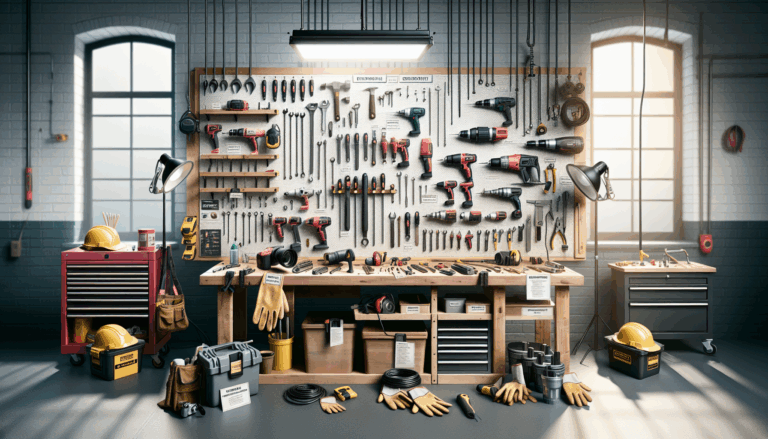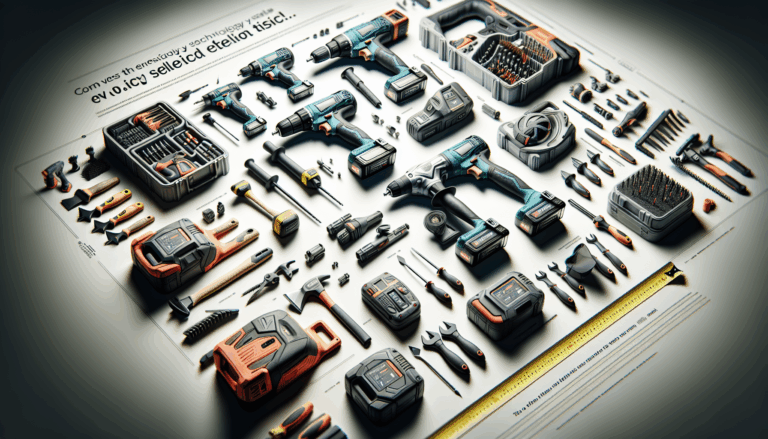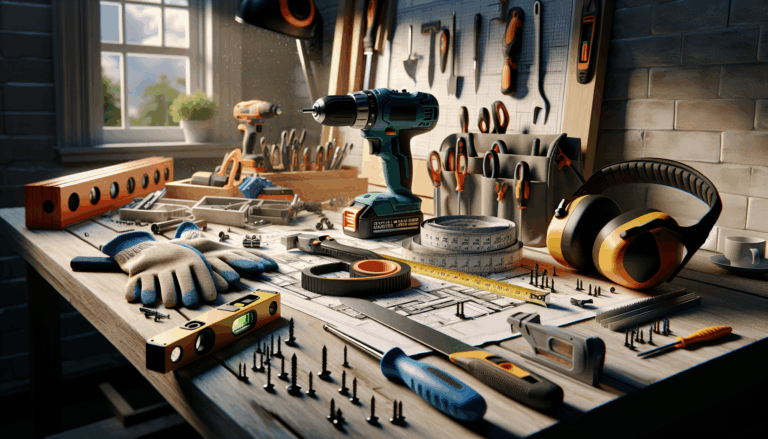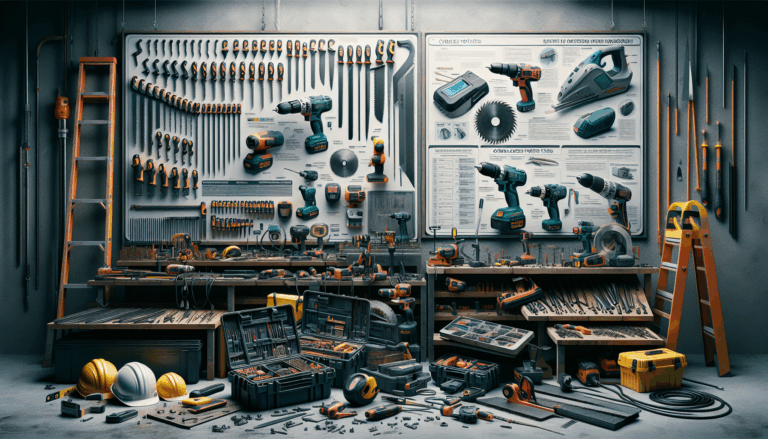Power Tool Usage & Projects
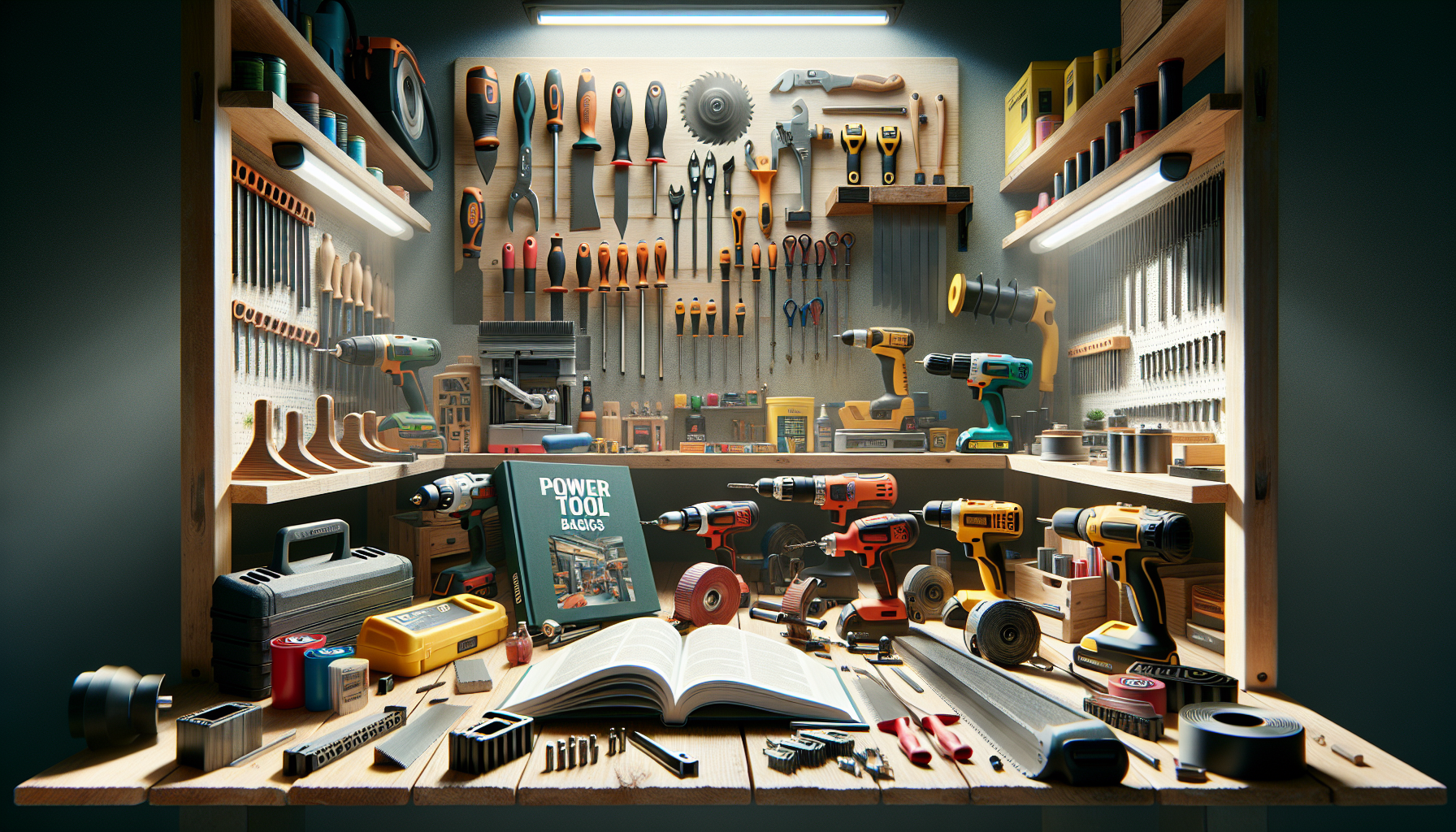
Power Tool Basics
Power tools are indispensable in both professional workshops and DIY home projects, significantly speeding up tasks and ensuring precision. For beginners, understanding how these tools operate is fundamental. Most power tools convert electrical energy into mechanical motion via a motor, which then drives the cutting, drilling, or shaping mechanism [source](https://onepowertool.com/blog/). This motor, whether it spins a blade or reciprocates a drill bit, is the core component that enables power tools to perform their tasks efficiently.
Choosing the right power tool and corresponding blade or bit is critical for optimal results and safety. Devices are tailored for specific functions: drills for creating holes, saws for cutting various materials, and grinders for surface smoothing. Each tool employs blades or bits suited to particular jobs—such as selecting a circular saw blade designed for wood, metal, or masonry—since factors like tooth count and blade composition vary with material type [source](https://onepowertool.com/blog/). Modern advancements have led to the proliferation of battery-powered models, primarily lithium-ion batteries, which offer longer run times, quicker charging, and a lighter weight than older nickel-cadmium options. Battery specifications like voltage and ampere-hours (Ah) are important metrics to assess a tool’s power and the duration it can operate on a single charge [source](https://onepowertool.com/blog/).
For comprehensive advice on selecting appropriate power tools and blades, we recommend exploring our detailed guide [here](https://onepowertool.com/blog/).
Power Tool Maintenance & Safety
Maintaining your power tools properly and handling them safely is essential to prolong their lifespan and prevent accidents. Regular troubleshooting—identifying issues like dull blades, worn brushes, or loose components—and performing necessary repairs can keep tools operating at peak efficiency [source](https://onepowertool.com/blog/). After each use, cleaning dust and debris prevents buildup that can impair motor function. Lubricating moving parts reduces friction, decreasing wear and tear, while proper storage conditions—such as keeping tools in dry, organized spaces—help avoid damage [source](https://onepowertool.com/blog/).
Always disconnect the power source before performing maintenance or repairs to prevent accidental startup injuries. Adopting these safety and maintenance routines minimizes downtime, enhances tool performance, and extends operational life. For detailed troubleshooting tutorials on specific tools, visit our [Power Tool Blog](https://onepowertool.com/blog/).
By integrating routine maintenance and adhering to safety protocols, you can ensure your power tools remain reliable and safe for every task, making your projects smoother and more secure [source](https://onepowertool.com/blog/).
Power Tool Usage & Projects
Mastering power tools unlocks a world of DIY possibilities, allowing you to complete projects more efficiently and enjoyably. Here are practical tips and innovative ideas to maximize your power tool skills:
Practical Usage Tips
- Safety First: Always wear proper personal protective equipment such as goggles, gloves, and ear protection. Keep your work area clean and well-lit to prevent accidents.
- Select the Right Tool: Matching the tool to the task enhances efficiency. Use a cordless drill for precision and mobility on small projects, while an angle grinder excels at cutting and shaping harder materials.
- Maintain Your Tools: Keep blades, bits, and abrasive pads sharp and clean. Regularly inspect for signs of wear or damage to prevent subpar results and damage to your tools.
- Secure Your Workspace: Use clamps and supports to stabilize workpieces, improving accuracy and safety during operation.
- Adjust Settings: Experiment with adjustable speeds and torque for different materials, avoiding overheating or tool strain.
Advanced Project Ideas
- Custom Shelving Units: Use a circular or miter saw for precise cuts, assemble with a drill and screws, creating tailored storage solutions.
- Home Automation Enclosures: Craft custom cases with a jigsaw and router, combining aesthetics with functionality for smart devices.
- Outdoor Furniture: Build sturdy benches or tables using power drills, sanders, and impact drivers for smooth finishes and secure joints.
- Wood Carving: Use rotary tools equipped with various bits to carve intricate patterns into furniture or décor items.
- Metal Art Projects: Employ angle grinders and cutting tools to create sculptures or garden décor from scrap metal.
Explore our [DIY Power Tool Projects section](https://onepowertool.com/blog/) for step-by-step guidance and creative inspiration to elevate your craftsmanship and turn your ideas into reality [source](https://onepowertool.com/blog/).
Power Tool Batteries
Understanding how power tool batteries work enables you to maximize their performance and lifespan. Most modern tools use lithium-ion (Li-ion) batteries, appreciated for their high energy density, lightweight design, and absence of memory effects—meaning they don’t lose capacity after partial charges [source](https://onepowertool.com/blog/). Li-ion batteries provide consistent power output, crucial for demanding tasks, but to preserve their health, avoid deep discharges and extreme temperatures. Partial recharging during usage and storing batteries in cool, dry places prolongs their usability [source](https://onepowertool.com/blog/).
Battery compatibility varies among brands. While manufacturers design batteries for their specific systems—DeWalt’s 20V MAX, Milwaukee’s M18, Ryobi’s ONE+—using non-original batteries can pose risks, such as reduced performance or damage. It’s advisable to use manufacturer-recommended batteries to ensure safety and optimal operation [source](https://onepowertool.com/blog/). For tips on enhancing your tools’ efficiency and extending battery life, visit our [blog](https://onepowertool.com/blog/).
Proper battery management reinforces your investment, guaranteeing longer runtime and better performance across your power tools [source](https://onepowertool.com/blog/).
Power Tool Accessories
Having the right accessories—such as blades, drill bits, sanding pads, and specialty attachments—can dramatically improve both the quality of your work and your efficiency. To select appropriate accessories, always match them to your specific power tool model and task material. For instance, carbide-tipped blades perform well in cutting dense wood or metal, while diamond blades are best suited for tile or concrete cuts. Using compatible accessories increases safety and ensures the best results [source](https://onepowertool.com/blog/).
Regular inspection of blades and bits for dullness or damage is crucial; replace them promptly to maintain clean cuts and prevent motor overload. Clean accessories after use and store them properly to preserve their sharpness and integrity. When operating, match the accessory’s speed rating with your tool’s motor speed and ensure proper installation—this reduces wear and minimizes safety hazards [source](https://onepowertool.com/blog/).
Effectively choosing and maintaining your accessories not only improves your work quality but also extends the lifespan of your power tools. For more advice on accessory care and selection, visit our [Power Tool Essentials blog](https://onepowertool.com/blog/).
Power Tool Brands
Selecting reputable brands ensures reliability, durability, and access to equipment that matches your needs. Top-tier brands like DeWalt, Milwaukee, and Ryobi offer distinct advantages:
DeWalt
Founded in 1924, DeWalt is renowned for crafting durable, professional-grade tools. Their extensive product lineup covers drills, saws, and outdoor equipment, emphasizing high performance and longevity [source](https://www.dewalt.com/about). DeWalt’s 20V MAX battery platform offers broad compatibility, enabling users to switch between tools without multiple batteries.
Milwaukee
Also established in 1924, Milwaukee emphasizes innovation and durability, especially in cordless tools. Known for their heavy-duty performance and advanced features like brushless motors, Milwaukee’s M18 and M12 batteries support a wide ecosystem ideal for demanding professional tasks [source](https://www.milwaukeetool.com/About-Milwaukee).
Ryobi
Established in 1943, Ryobi targets DIYers and homeowners with budget-friendly, versatile tools. Their ONE+ 18V platform provides compatibility across a wide range of equipment—from drills to lawn tools—making them a popular choice for casual projects [source](https://www.ryobitools.com/about-us).
When choosing a brand, consider their battery ecosystems. For example, DeWalt’s batteries are not interchangeable with Milwaukee or Ryobi systems, so committing to one brand’s platform often offers better compatibility and cost efficiency for your toolkit [source](https://onepowertool.com/blog/).
For more insights on selecting the right power tools for your needs, see our full guide at [One Power Tool](https://onepowertool.com/blog/).
Power Tool Repair
Keeping your power tools in top condition through repair and maintenance saves money and extends their life. Here’s a straightforward repair process:
- Diagnose the Issue: Look for signs like unusual noise, overheating, or failure to operate. Consult your user manual for troubleshooting tips.
- Unplug & Disassemble: Ensure safety by unplugging before opening the case. Use proper screwdrivers to carefully remove covers, noting component placement.
- Clean Internal Parts: Use compressed air to remove dust and debris. Clean contacts and switches with electronic cleaner sprays.
- Inspect & Replace Worn Parts: Check bearings, brushes, gears, and belts. Replace worn components like carbon brushes which commonly need replacement.
- Check Wiring & Connections: Tighten loose wires and replace frayed cords to restore electrical integrity.
- Lubricate & Reassemble: Apply manufacturer-recommended lubricants to moving parts, then carefully reassemble the tool.
- Test: Run the tool under no load to ensure proper operation before full use.
**Cleaning tips** include regular vacuums of vents, wiping down surfaces, and proper storage in dry areas to prevent rust and damage [source](https://onepowertool.com/blog/).
By routinely repairing and maintaining your power tools, you enhance their safety, efficiency, and lifespan, ensuring they continue performing at their best for many projects to come [source](https://onepowertool.com/blog/).
DIY Power Tool Projects
Engaging in DIY projects with power tools can be rewarding and educational. Start with simple tasks like crafting a bookshelf, which teaches basic cuts and assembly, then progress to more complex builds such as outdoor furniture or custom storage solutions. Selecting appropriate tools—cordless drills, jigsaws, sanders—and following detailed plans ensures success and safety.
Incremental projects help build confidence and skill, gradually exposing you to different tools and techniques. Online tutorials, videos, and blogs—like our [Power Tool Blog](https://onepowertool.com/blog/)—offer step-by-step instructions, safety tips, and inspiration for transforming raw materials into functional or decorative pieces.
Whether creating practical household items or artistic pieces, harnessing power tools expands your creative potential and elevates your craftsmanship. Dive into our resources and begin turning your ideas into reality today.


